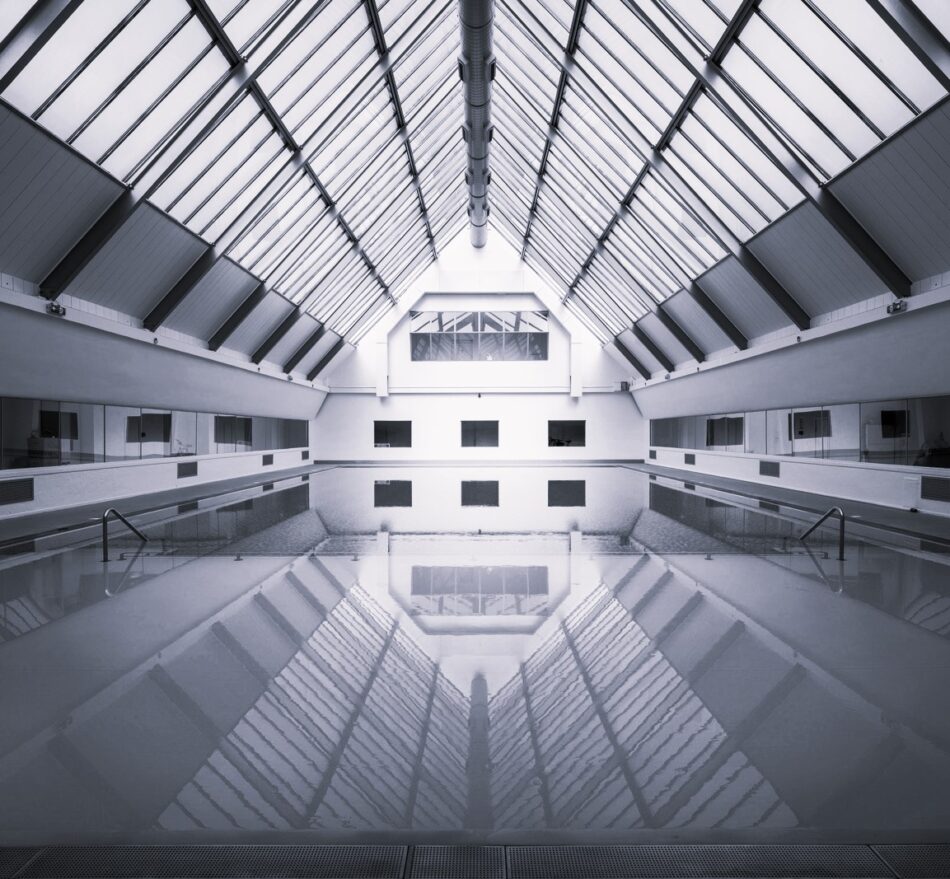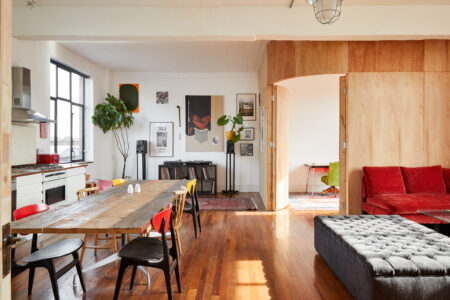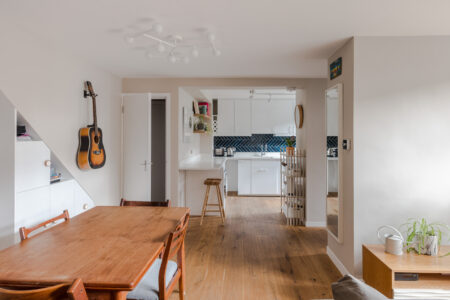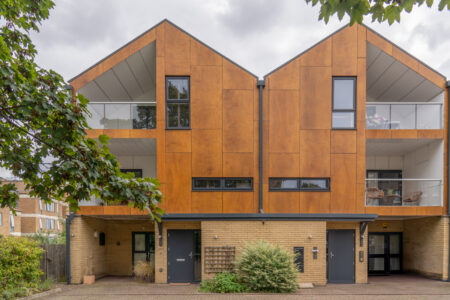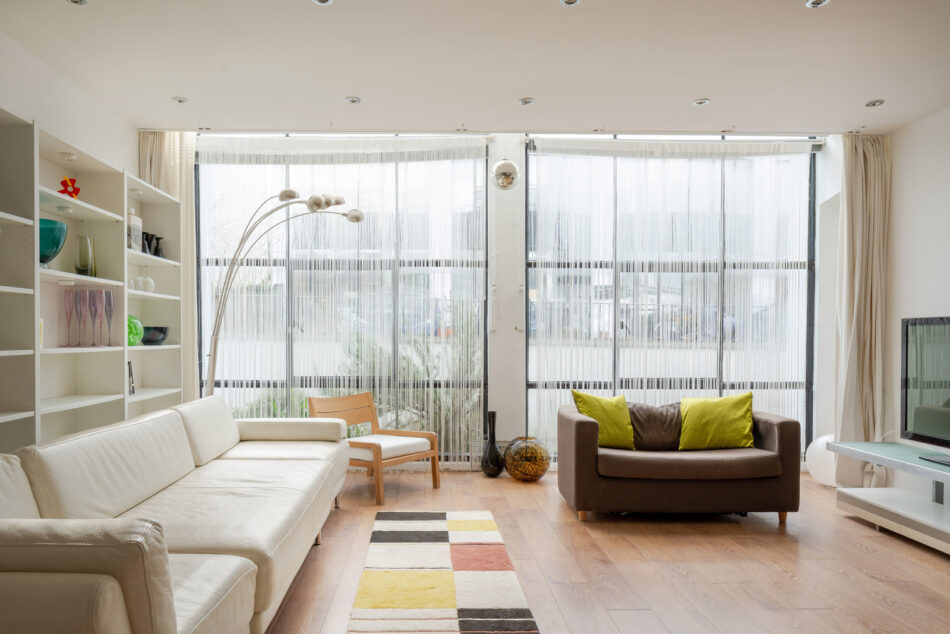
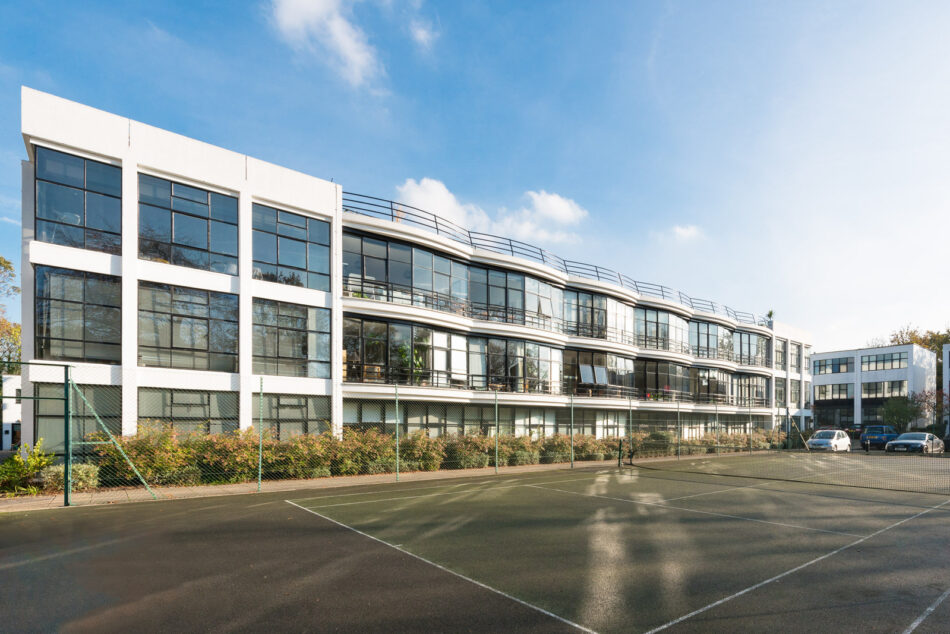
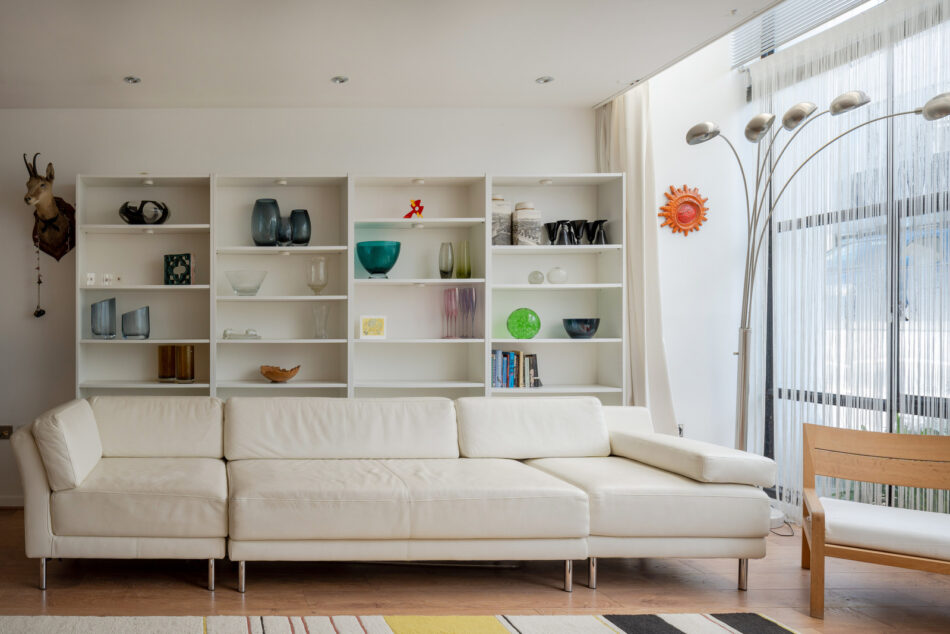
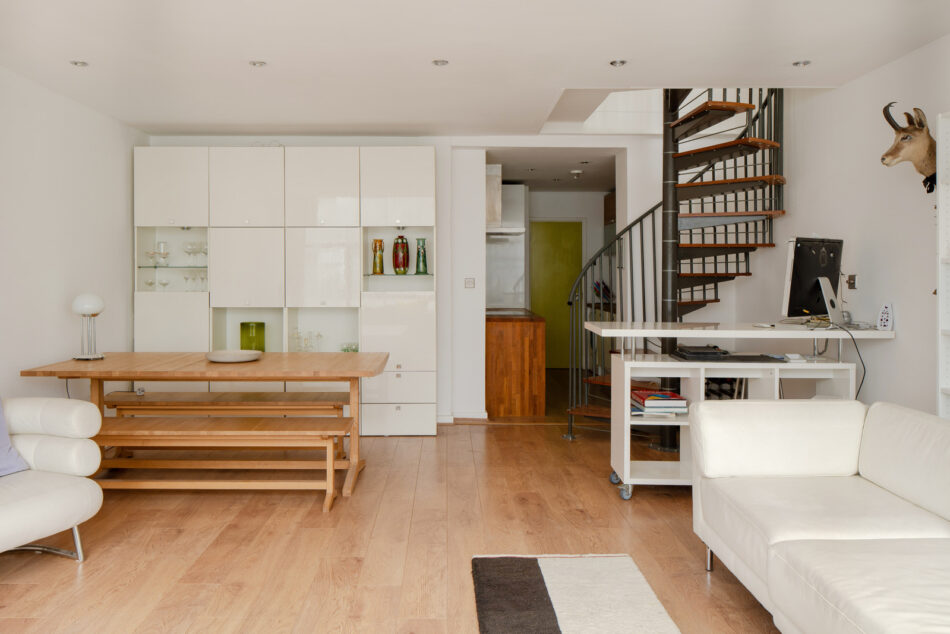
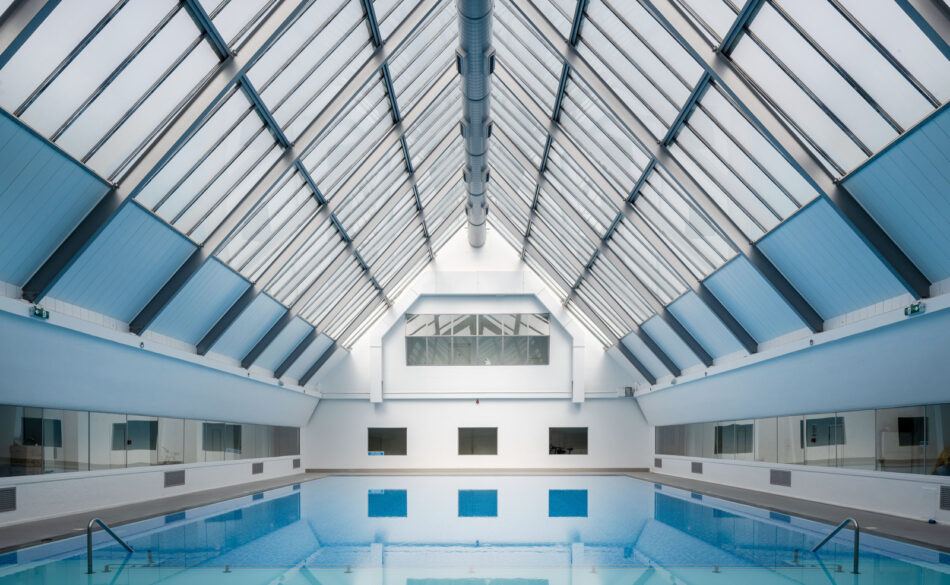













Pioneer Centre V
St Mary's Road, London SE15
Architect: Owen Williams
Request viewingRegister for similar homes“Soaring banks of glazing define the façade of what was hailed as 'Britain's best new building' by Walter Gropius when it was built”
This two-bedroom split-level apartment lies within Sir Owen William’s 1935 Pioneer Centre on St Mary’s Road in Peckham. The Grade II-listed art deco building is within gated grounds and is characterised by expansive banks of windows that flood its interiors with light. The building has a strong community feel and, due to its early history as a health centre, residents have access to wonderful amenities, including a 1930s swimming pool, tennis courts, bike storage, a gym and gated grounds. The apartment also comes with a private off-street parking space.
The Architect
The Pioneer Centre was designed by Sir Owen William, best known as the principal engineer for Wembley Stadium and Birmingham’s ‘Spaghetti Junction’. Using concrete and steel in the centre’s design allowed the architect to realise ambitious, striking shapes. The building’s pool is at the centre of the building, set beneath a glazed roof that draws in an astonishing amount of natural light. For more information, please see the History section below.
The Tour
The apartment is accessed at the first floor, where the living and kitchen accommodation unfolds. There are double-height ceilings at the front and tall banks of glazing that reach up to the first floor at the back. A bank of cabinetry provides display space, and a sculptural spiral staircase in timber and steel provides access to the upper floor.
To the rear of the ground floor plan is the kitchen. There is an induction hob with steel extraction above and a Samsung oven below. White cabinetry is topped with oak and a circular steel sink to one side is flush with the countertop. A bank of Perspex-fronted cabinetry rests above the sink. Behind a door at one end of the kitchen is a useful and generous storage room.
The spiral stairs ascend to a first-floor lobby; laid with a cream carpet, it connects to two double bedrooms and a bathroom.
Borrowing light from the tall windows in the living room, the two bedrooms are both doubles and overlook the double-height section of the living room. There are views of the tennis courts through the window beyond; in the main bedroom, sliding light blue screens close off the window when required. The second double bedroom has a grey-painted timber floor, with a set of wardrobes with sliding doors.
To complete the plan is a bathroom, where large panel ceramic tiles in a biscuit shade line the walls and ground the room. There is a timber effect panel and a frameless glass screen to the bath, and a circular sink rests on a circular drawered cabinet. Two frosted glass open shelves flow above the WC and there is silver sanitaryware and towel rail.
Outdoor Space
As a result of its early history as a health centre, residents have access to unrivalled facilities, including a striking 1930s swimming pool, tennis courts, gym and gated grounds.
The Area
The Pioneer Centre is excellently located between the thriving areas of Queens Road Peckham and Nunhead. Recent developments along Queens Road continue to contribute to the area, notably the Blackbird Bakery under the railway arches, Mama Dough’s pizza restaurant, and several new independent bars. Nunhead Lane has a village-like feel, with a greengrocer, a fishmonger, a deli, a café and a new community centre by AOC architects. Popular local pubs include the Old Nun’s Head and Beer Shop.
The nearby Bellenden Road has become a centre for some excellent independent restaurants, bars, and shops, including Artusi, The Begging Bowl and Flock & Herd butchers. The Bussey Building, off Rye Lane, hosts an active and varied programme of yoga/dance classes and workshops, along with a residency from the Royal Court Theatre. Peckham Levels hosts street food, bars and cafes, along with live music. The green spaces of Telegraph Hill, with wonderful views over the city, and Peckham Rye Park are a short walk away.
The building is well located for local schools; within walking distance are St Thomas The Apostle (secondary and sixth form), with local primary schools including Edmund Waller, Kender, John Donne, St Mary Magdalene Church of England, and Hollydale.
Queens Road Peckham is the nearest station, just a five-minute walk away, running London Overground services to Shoreditch High Street and Dalston Junction in one direction and Clapham Junction in the other. Connections to the Jubilee Line can be reached at Canada Water (10 minutes) and the Northern Line at Clapham High Street (11 minutes). Southern trains run services to London Bridge with a journey time of around 7 minutes. Nunhead station is a seven-minute walk away with connections to Victoria (in 15 minutes) and King’s Cross St Pancras (in 25 minutes).
Tenure: Leasehold
Lease Length: Approx. 100 years remaining
Service Charge: Approx. £3,000 per annum
Ground Rent: Approx. £150 per annum
Council Tax Band: C
Please note that all areas, measurements and distances given in these particulars are approximate and rounded. The text, photographs and floor plans are for general guidance only. The Modern House has not tested any services, appliances or specific fittings — prospective purchasers are advised to inspect the property themselves. All fixtures, fittings and furniture not specifically itemised within these particulars are deemed removable by the vendor.




History
The Pioneer Centre was purpose-built for what became known as ‘The Peckham Experiment’. Two doctors, George Scott Williamson and Innes Hope Pearse chose Peckham because the “populace roughly represents a cross-section of the total populace of the nation with as widely differing a cultural admixture as it is possible to find in any circumscribed metropolitan area”. The doctors believed that medical practice was overly focused on curing disease, rather than on cultivating good health and preventing illness. Instead, they believed that given the right tools, people would take responsibility for their own well-being.
The experiment began in 1926, using a house on Queen’s Road SE5 as its base. For the new Pioneer Centre, Sir Owen Williams devised large open spaces to allow the Centre’s doctors to properly observe the members. Williams was formally trained as an engineer and is best known for his design of the Express Building in Manchester, along with forward-thinking designs for Britain’s motorways including ‘Spaghetti Junction’. Using concrete and steel allowed the architect to realise ambitious shapes that housed a gymnasium, lecture hall and rest and recreation rooms. At the centre of the building is the swimming pool, whose glazed roof allows in as much natural light as possible, along with windows that could be fully opened to circulate fresh air into the building. Cork floors encouraged people to walk barefoot.
The doctors paid members one shilling a week, and they had access to organised activities, games and workshops as well as yearly medical examinations to keep track of progress. Central to the Pioneer Centre’s philosophy was the belief that left to themselves people would begin to organise in a creative way, which indeed happened. The centre closed in 1950 despite public support, as its innovative approach did not fit with the tenets of the newly formed NHS. However, its ideals inspired further projects in the field of social biology.
